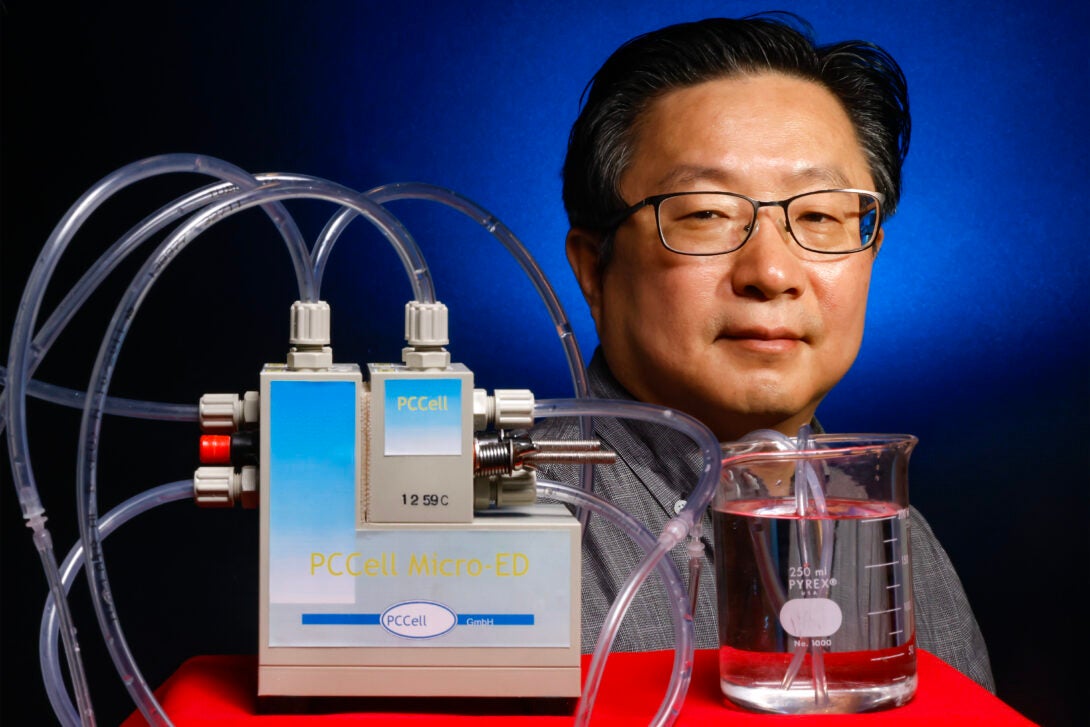ChE professors work to reduce pulp, paper industry CO2 emissions
block

The pulp and paper industry is one of the largest industrial sectors worldwide and, thus, has significant environmental consequences. According to the US Environmental Protection Agency, the pulp and paper industry was responsible for emitting 34.9 million metric tons of carbon dioxide (CO2) in 2021.
Chemical Engineering Associate Professor Sangil Kim and Professor Brian Chaplin were recently awarded a grant by the Department of Energy’s Industrial Efficiency and Decarbonization Office (IEDO) to support research in reducing the CO2 emissions generated by pulp and paper production.
“We are targeting the pulp and paper industry due to its unique opportunities, including the potential to make a significant impact on CO2 emissions,” Kim said.
Chaplin added that their innovative membrane technology can effectively tackle the challenges in decarbonizing the pulp and paper industry.
Working with North Carolina State University (NCSU), the Rensselaer Polytechnic Institute, and Rayonier Advanced Materials, they are employing a novel bipolar membrane electrodialysis (BMED) system to reduce greenhouse gas emissions, specifically CO2.
Bipolar membranes (BPMs) consist of a negatively charged cation exchange layer and a positively charged anion exchange layer, allowing the generation of protons and hydroxide ions via a water dissociation mechanism under an electric field. When acidified black liquor containing inorganic salts is introduced into the BMED system, the sodium ions combine with hydroxide to produce sodium hydroxide, and sulfate ions react with protons to produce sulfuric acid. The concentrated sodium hydroxide is recycled back into the pulping process to produce white liquor, while the sulfuric acid is also reused in the process.
In the project, the BMED system replaces the traditional kraft chemical recovery processes of using a recovery boiler and lime kiln in the pulp and paper industry that consume large amounts of electricity and produce large amounts of CO2. In particular, replacing the recovery boiler is crucial for decarbonizing the pulp and paper industry, as it accounts for more than 65% of the total CO2 emissions in a mill. This high level of emissions is primarily due to the combustion of dissolved lignin, a class of organic polymers that form cell walls in wood and bark.
Implementing the proposed BMED technology in pulping chemical recovery will allow the elimination of the recovery boiler and lime kiln, which will substantially reduce CO2 emissions. The proposed technology will yield lignin products that can be converted into aviation fuel, contributing to further CO2 emission reduction.
Kim, Chaplin, and their collaborators are developing a novel class of BPMs, which can overcome the significant challenges associated with commercial BPMs, such as high ohmic resistance and inadequate interfacial adhesion. Kim and Chaplin have over 20 years of experience in developing cutting-edge membranes for selective ion and gas transport.
In the project, they will leverage prior expertise in the development and evaluation of electrochemical membranes and separation process and will perform a relevant scale demonstration. They will develop a prototype BMED module capable of producing 50 liters per hour of sodium hydroxide and sulfuric acid, which will be installed at NCSU to evaluate its performance in a relevant environment.
Subsequently, the project team plans to manufacture BPM through a roll-to-roll process to assemble a large volume of BPMED units. These units will then be installed and tested in the pulp industry. The team expects that the BPMED system will offer a 54.8% reduction in carbon emissions, achieving 0.208 kg CO2 per kg of products, compared to the conventional kraft process, which emits 0.460 kg CO2 per kg of product.
The bipolar membrane is currently a hot research topic in many countries.
BMED is also being utilized for resource recovery in the fields of CO2 capture, food processing, ammonia nitrogen recovery, and wastewater ion removal. These applications are primarily at the lab scale, but their development is promising.
Although the market for BMED is relatively small, it is experiencing rapid growth, driven by increasing demands for sustainability and efficient water treatment solutions. The global market for electrodialysis equipment, which includes BMED systems, was valued at approximately $830 million in 2020. It is forecasted to reach $1.2 billion by 2026.
Additionally, the project offers a strong Diversity, Equity, Inclusion, and Accessibility Strategic Plan that includes twenty percent of the funding for this research will be allocated toward recruiting students from underrepresented populations to assist with this research.